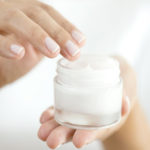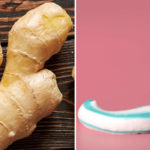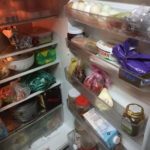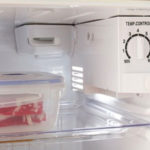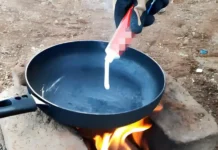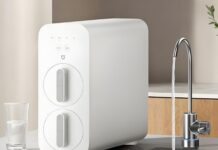If your refrigerator is experiencing slow ice making or freezing due to insufficient cold air supply to the freezer, the main cause of this is often how we set up and use the refrigerator. In this case, you should check the refrigerator and pay attention to the following points:
Causes of slow ice making in the refrigerator
The refrigerator is set at a low power level
When the refrigerator is set at a low power level, the additional cold air supplied to the refrigerator will also decrease, causing the refrigerator to make ice slowly. Check if your refrigerator is currently experiencing this issue, if so, adjust the power level of the refrigerator to a higher setting.
Recently added a large amount of food to the refrigerator
When you add a large quantity of food (especially in the freezer compartment) to the refrigerator, the temperature inside the refrigerator will rise, and it will take some time for the refrigerator to replenish the cold air and return to its previous low temperature. This process takes time, and afterwards, the refrigerator will make ice as quickly as before. In this case, you do not need to do anything else.
If you have set the refrigerator to a higher power level as usual and it still makes ice slowly, the cause may be that you have inadvertently prioritized cold air to the refrigerated compartment more than usual, causing the freezer compartment to be less cold.

Quick tips to make ice freeze faster and save electricity
To overcome this situation, you can set the refrigerator to a higher power level or reduce the amount of food in the refrigerated compartment. Additionally, you can utilize the following tips to make ice freeze faster.
Tips to make ice freeze faster
Use aluminum foil
Aluminum foil has a great thermal conductivity, so when you wrap it around the ice tray, it helps to generate cold faster and freeze the water more quickly.
How to do it: First, wrap the ice tray with aluminum foil on the outside, then pour water into the ice tray. After you have poured the desired amount of water, place the ice tray in the refrigerator and freeze it as usual.
You can also place another ice tray, without aluminum foil, in the freezer at the same time as the tray with aluminum foil. After 2 hours, take out the two ice trays and compare them, ensuring that the one with aluminum foil will be completely frozen.
Similarly, instead of using plastic ice trays, you can switch to metal ice trays (made of aluminum, stainless steel, etc.) which will significantly reduce energy consumption. Additionally, it is recommended to choose ice trays with a larger surface area, as the larger the surface area, the faster the ice making process (similar to making ice in trays is faster than freezing water in bottles).
Use purified water
This method is very simple, just put bottled purified water in the freezer compartment for about 2 hours.
Next, carefully take out the water bottles. At this point, knock the bottle on the table and you will have frozen ice in the bottle.
Or you can use a bowl to hold a few pre-made ice cubes and pour water from the bottle directly onto them to get a full bowl of ice.
According to experts, purified water does not contain impurities such as dirt or microorganisms in tap water, which means the ice crystals do not have anything to form around, so the water can reach a temperature below freezing without solidifying. Applying force to it will help catalyze the formation of ice.
Source: VTC.vn
Is Refrigerated Leftovers Linked to an Increased Risk of Cancer?
Dr. Lam Van Man, Head of Research, Development and Technology Transfer Department of the Institute of Safety Food, has warned of the risk of food poisoning when reheating leftovers from the refrigerator. But what should we be aware of when it comes to the possibility of these leftovers causing cancer? Here, we explore what the experts have to say on the matter and offer some tips for safe eating.

























